Photographing Wet Places in a Dry Land, Mammoth Cave National Park
2 Comments
Mammoth Cave National Park is generally a dry place. I explore a few out-of-the-way watery places within the park, while discussing some of the compositional strategies I used in those relatively plain scenes.
Sloan’s Crossing Pond
Water has made the longest cave in the world. The karst landscape of Mammoth Cave National Park is characterized by water being quickly channeled underground. Streams are few and little surface water is available. Sloan’s Crossing Pond provides important wetland habitat. Its textures are not found elsewhere else in the park, and it is also a rare spot with an opening from the forest.
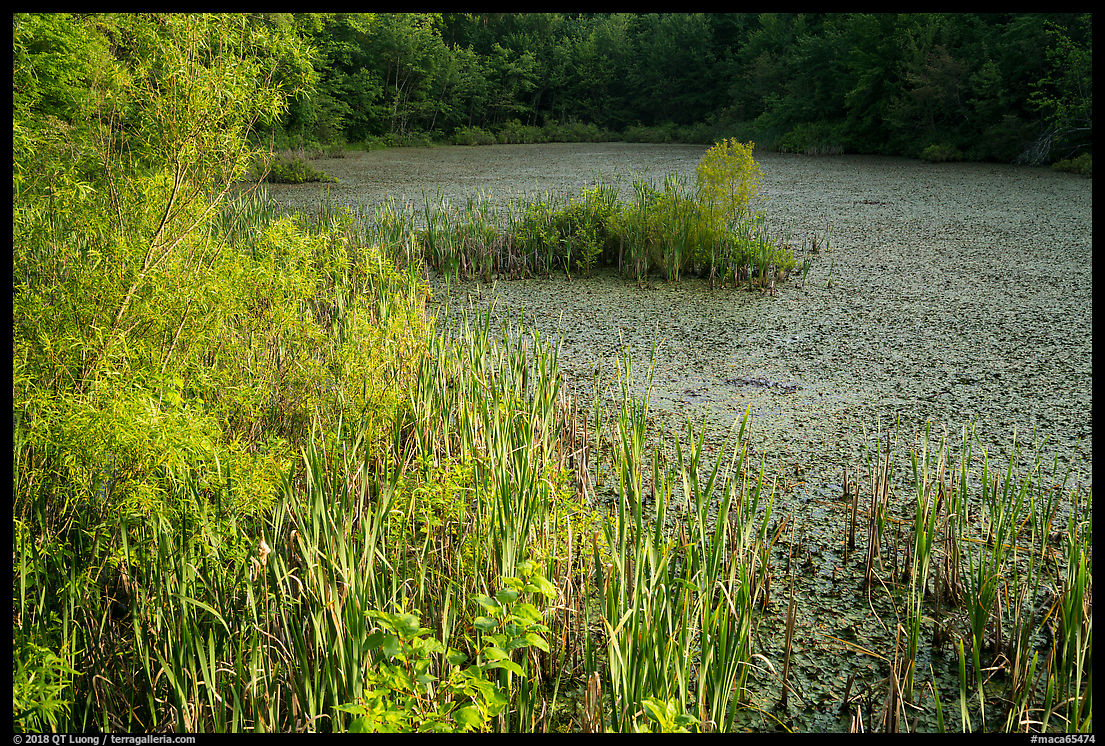
How did I photograph Sloan’s Crossing Pond? I timed my arrival for the late afternoon. Reflections in water surfaces are an important part of their photographic appeal, and they are more clear when the water is in the shade. I walked the half-mile trail around the pond to look for different viewpoints.
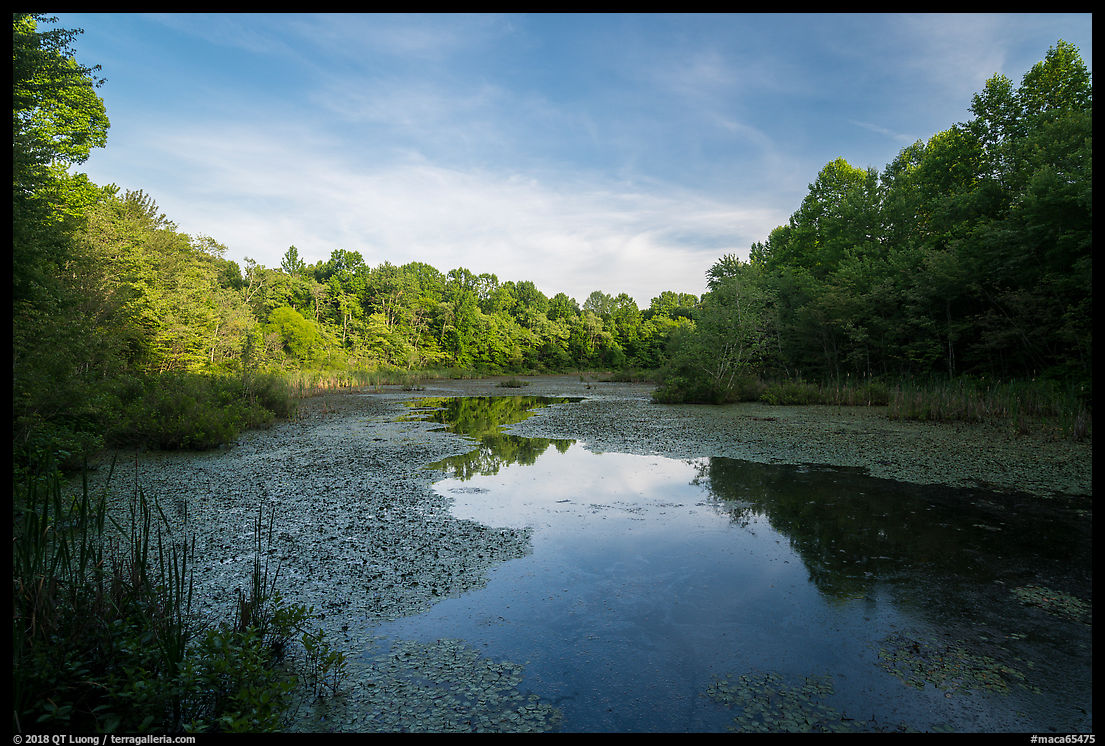
My normal operating mode is upon arriving at a scene to first seek a wide-angle image. Usually, a quick glance is enough to tell if there is a compelling composition, and then it is a matter of framing and balancing elements, which I do instinctively. There is much more to landscape photography than the wide-angle image. The second phase involves more discovery and observation, as I identify the details of the grand scene that I find the most interesting. It takes time and a more deliberate mind to find those images, but the images reveal the natural features of a place in a deeper way and are often more personal. An easy way to start finding those images is simply to switch to a longer focal length and scan the scene. The following images are examples of such details found from the previous image.
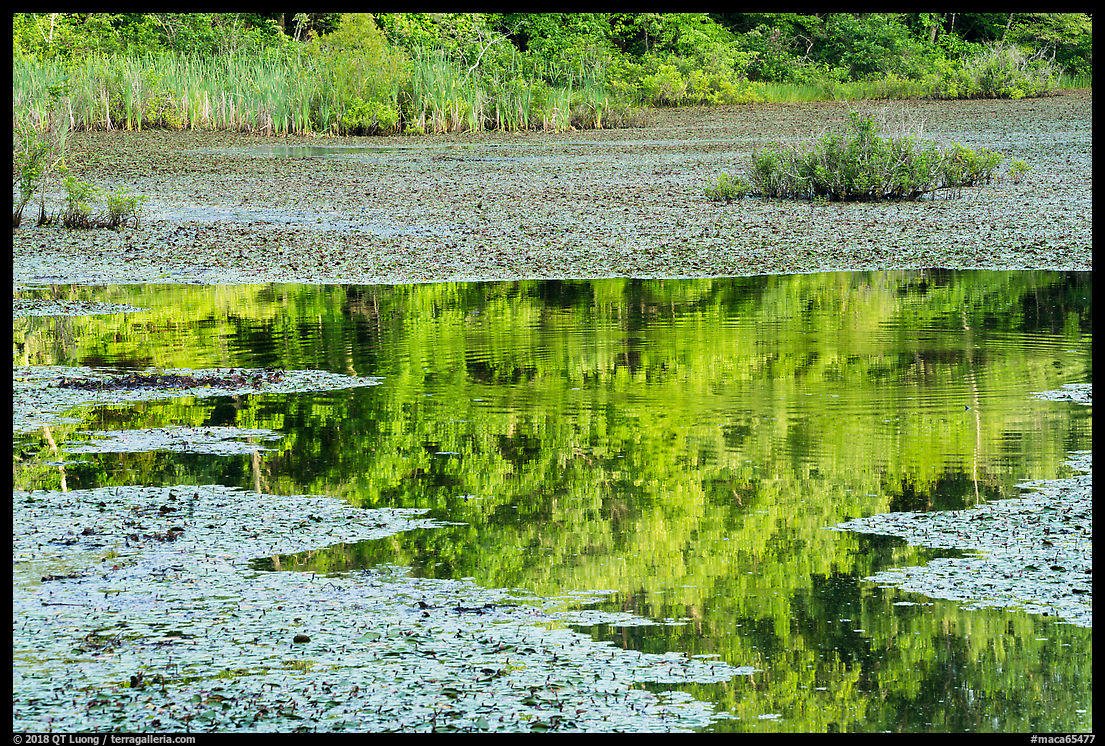
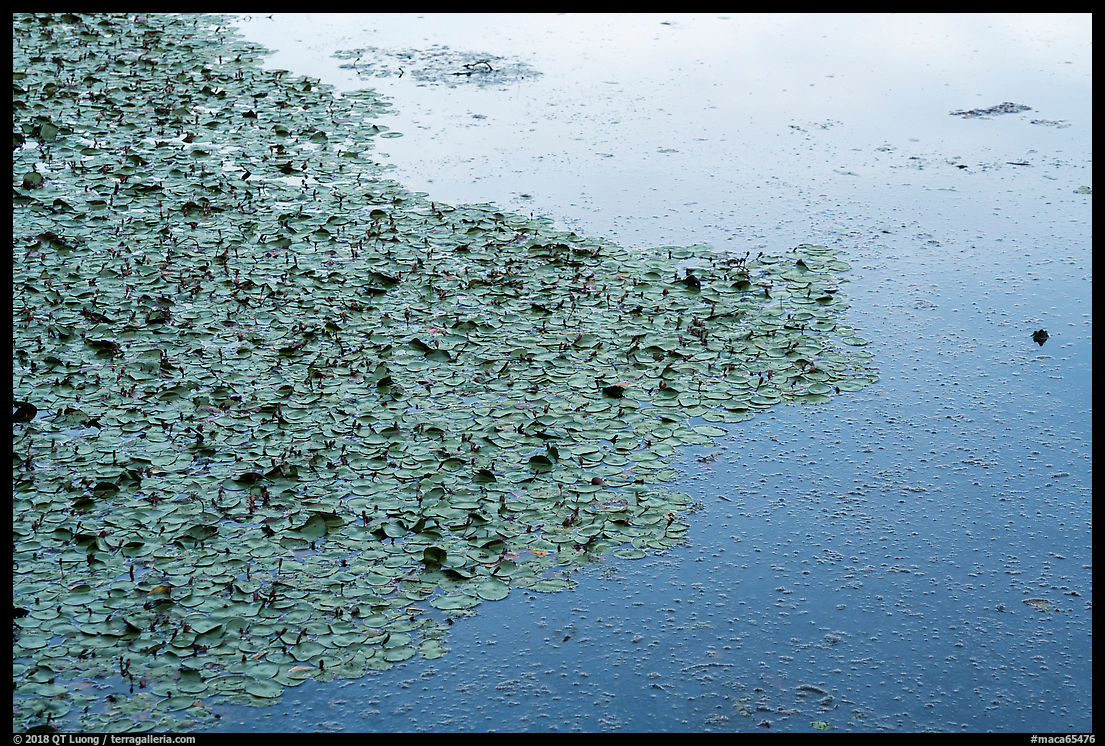
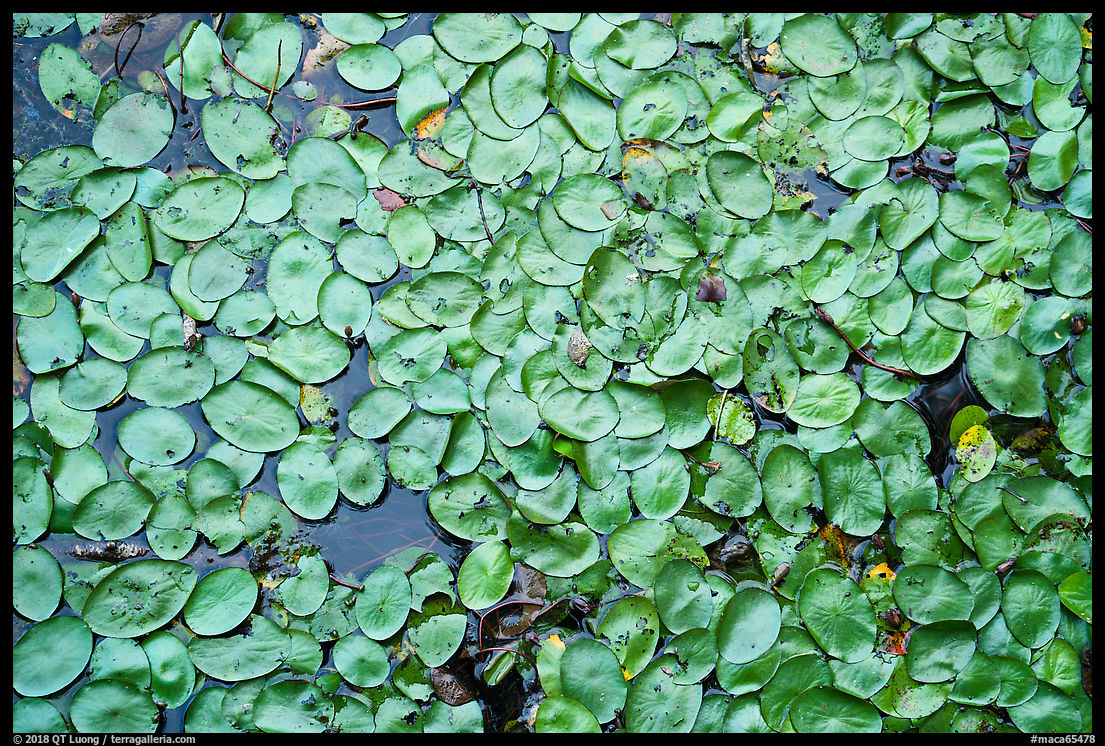
Green River Ferry
The Green River crosses the entire length of the park, and from what I read makes for a wonderful float trip, but there are relatively few access points to see the river from land. The most well-known, because it is close to the cave entrances, is the Green River Ferry. While it is fun to make the crossing or observe the unusual ferry operate, the surroundings aren’t too natural.
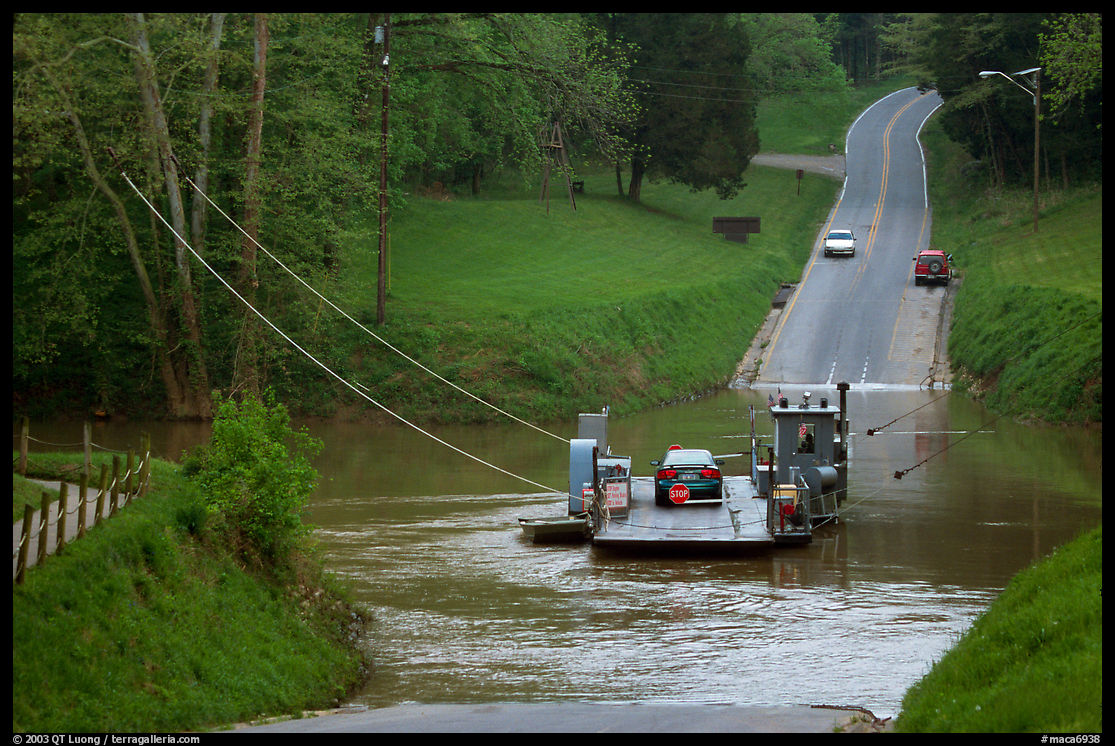
The Green River Ferry is the only ferry which is currently active in the park, but there used to be more. Although they are now abandoned, their access roads lead to river viewpoints where you’ll find few other visitors.
Houchin Ferry
The river access point with the most possibilities is Houchin Ferry, located at the western edge of the park. The Houchin Ferry Campground is a delightful place to spend the night, as you can set your tent on a grassy area next to the river. It is much smaller and intimate than the campground located near the visitor center, and because it is out of the way, even arriving on a Friday evening without a reservation, several campsites were available. Instead of securing a site upon arrival, I proceeded to catch the sunset colors.
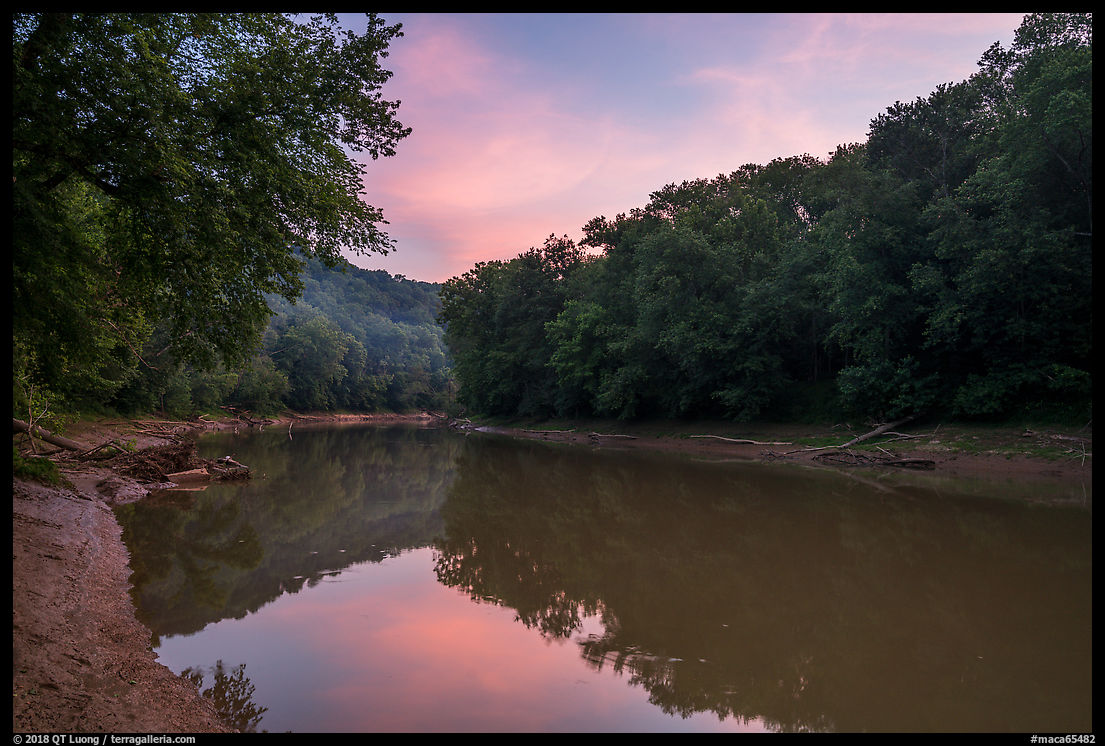
Mammoth Cave National Park consists of heavily forested gently rolling terrain, so most of river views are limited by the forest, but they could be remarkable with the right conditions. As Kentucky has high humidity, and the many cave openings provide quite a bit of cool air, there was a good possibility that that fog would roll in at night to burn in just for sunrise, but I did not get lucky that morning. Right at the landing, a power line intrudes into compositions. Looking for alternatives, from the campground, I followed a narrow user trail leading to the riverbank, which turned out quite muddy and slippery. Besides ruining shoes, the mud doesn’t make for a great foreground, especially with the footprints. My first attempt to mitigate the issue was to hide it with river driftwood.
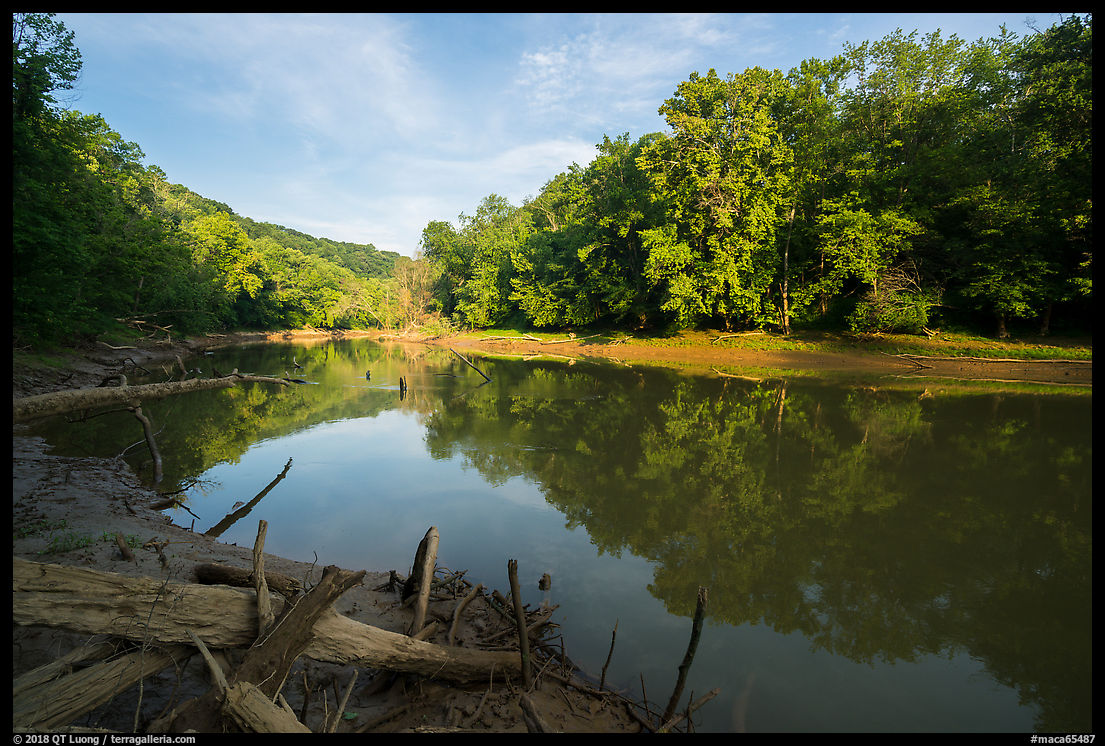
I then tried a second solution, which was to make the foreground less prominent. I placed its closest elements further away by placing the horizon higher in the picture. The sky, now occupying a larger part of the image, needed something more, and I partly filled it with an overhanging branch. A frequent problem when “framing” pictures with trees is that they bear little relationship to the rest of the image. I avoided that by finding a branch in the water to echo it, and I made sure it was clearly defined by placing part of it against the reflection of the sky.
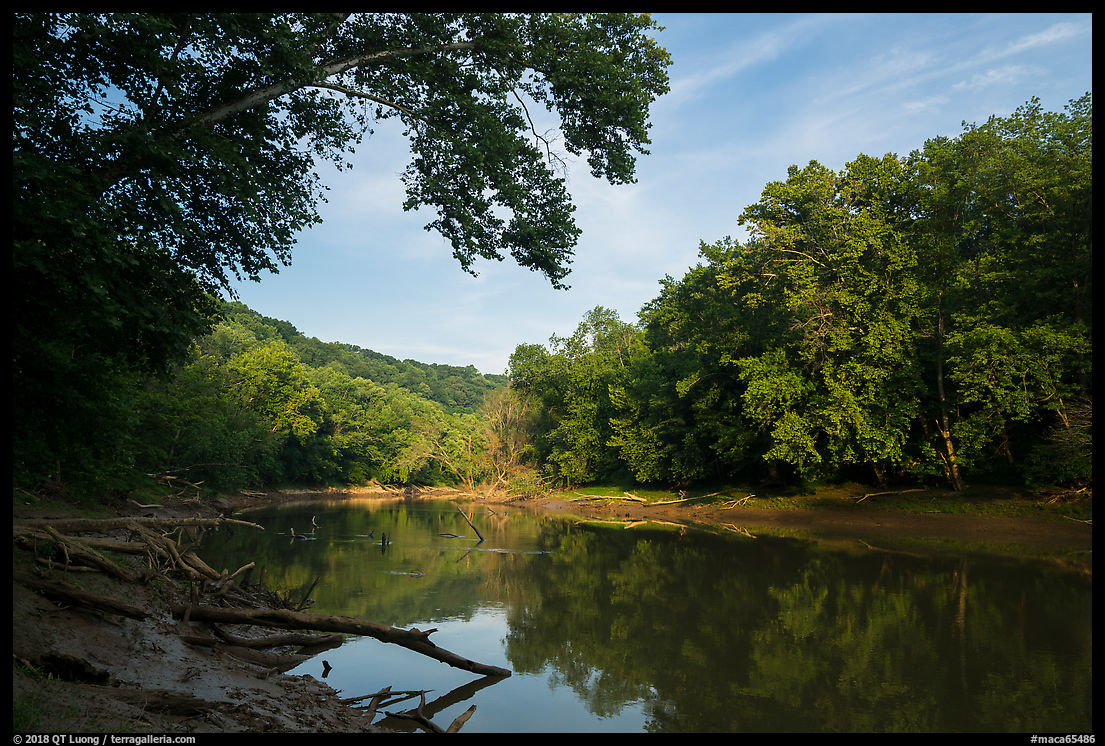
Dennison Ferry
Dennison Ferry is at the end of a gravel road, and lightly visited. Unlike Houchin Ferry, it is not a boat launch, but rather a canoe launch. Steep stairs lead to the river, whose bank at this point is steep, precluding wandering around, unlike at Houchin Ferry. The only place to stand at is at the bottom of the stairs. During the first exposure I made, light rain created texture on the water’s surface, and I made it the main subject of the picture.
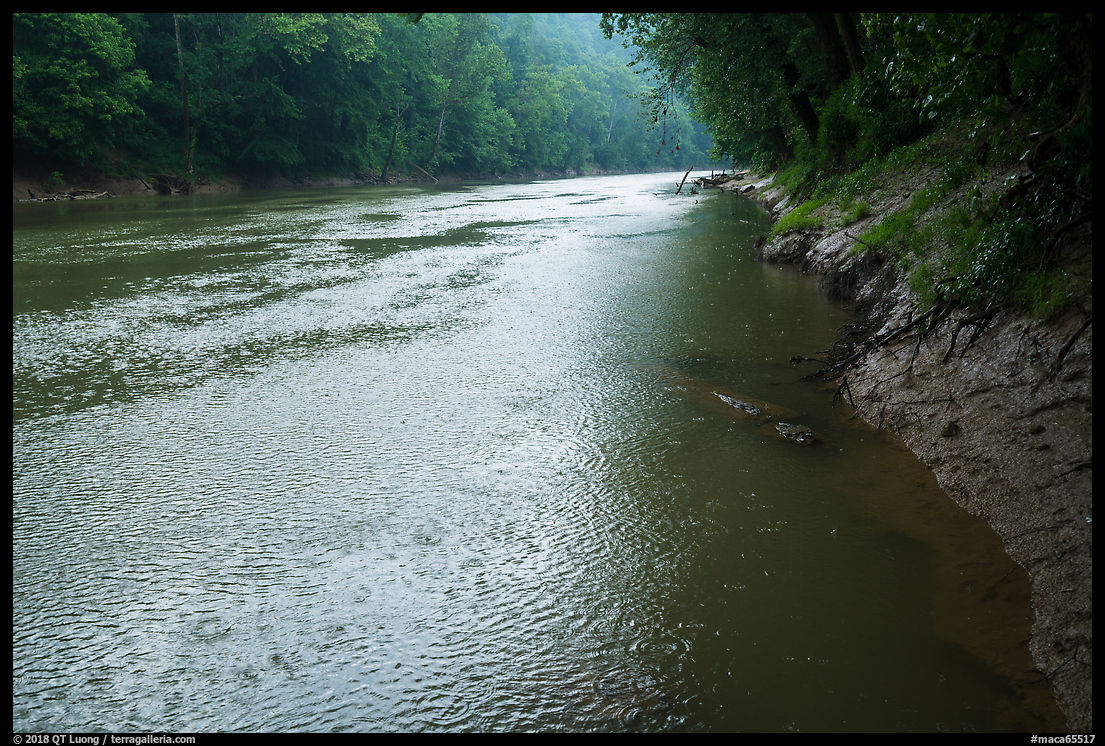
After the rain stopped, the surface of the water changed to a mirror. I noticed a bit of fog rising in the distance, and liking the atmosphere it created, I framed a different image from the same viewpoint.
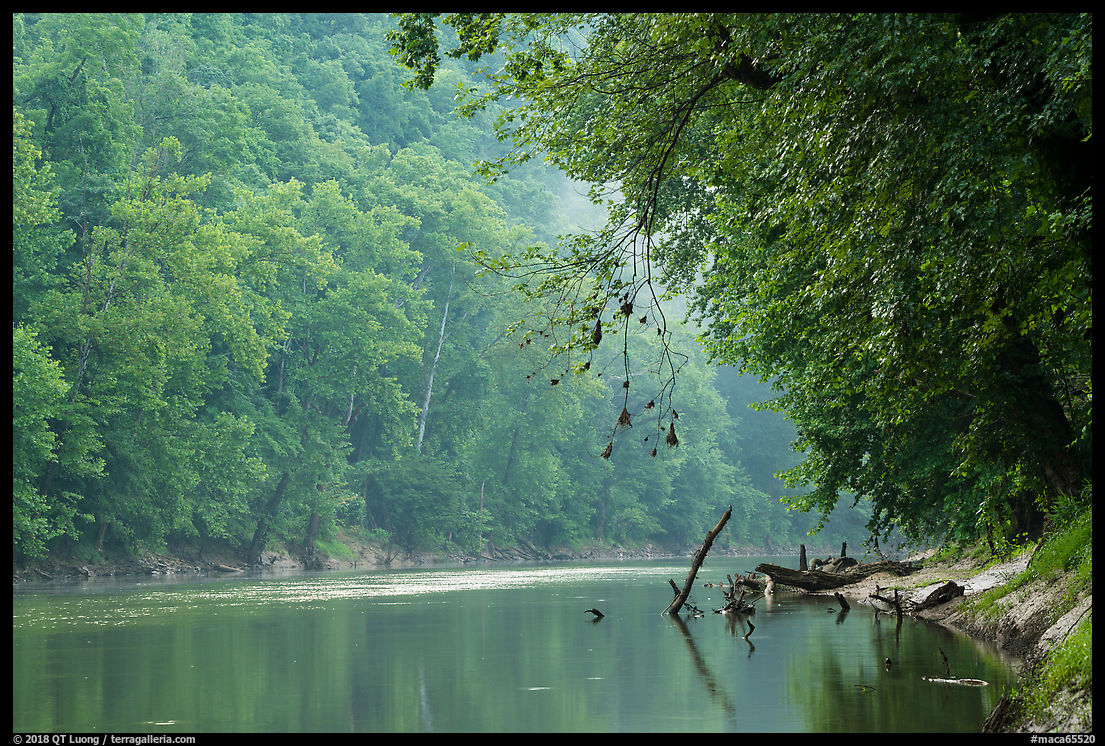
Of course, visitors come to Mammoth Cave National Park primarily to check out the cave. Besides, what interested me the most in the 80 square miles of rolling hilly country are the sinkholes and limestone cliffs, which offer subtle clues that a vast cave system lies beneath. However, this time I checked out those wet places in a quest to explore each corners of our national parks. Even if you don’t find them remarkable, I hope you’ve enjoyed the peek at my approach to composition.


Hi QT. It is fascinating and educational to follow your thought processes that go into crafting a composition. Thanks, Paul
Greetings QT – always enjoy your posts. Haven’t been to Mammoth Cave in many years, this causes me to think maybe I need to make some time this spring.